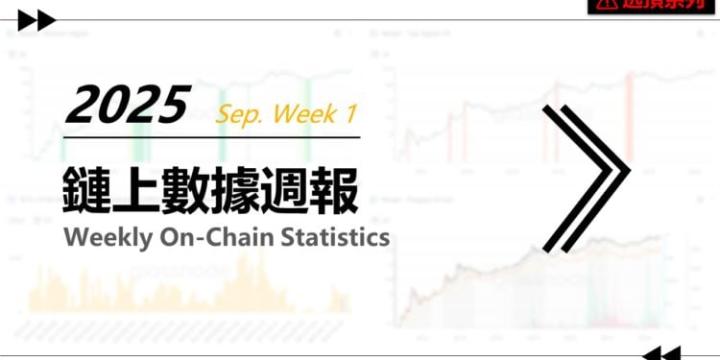Original author: a16z crypto
Original text compilation and translation: Portal Labs
Preparing for the Pitch with Arianna Simpson
In the Web3 world, cycles aren't unexpected; they're the norm. The alternation between bull and bear markets is like the tides of capital and the seasons of nature. For founders, the biggest challenge isn't predicting the next reversal, but rather how to survive the ups and downs, and even build long-term value against the tide.
Recently, a16z crypto partner Arianna Simpson shared her experience investing in the crypto industry over a decade in a podcast. From the shock of the Bitcoin white paper, to finding product-market fit for stablecoins, to the intersection of crypto and AI , and her advice to founders.
These observations and experiences aren't just applicable to Silicon Valley. Portal Labs believes they also offer valuable insights and lessons for Web3 founders and high-net-worth investors in China.

The nature of cycles
Arianna's journey into crypto began with the shock she felt upon first reading the Bitcoin white paper over a decade ago. But what truly kept her here wasn't that momentary thrill, but the ups and downs she experienced over the next decade. She witnessed the birth of Bitcoin, the boom of DeFi, the craze for NFTs, and the subsequent bubbles and cooldowns. It was through this long-term observation that she gradually came to a clear understanding: the crypto industry has never grown linearly, but rather in volatile waves, with sentiment and capital surging and retreating.
As a result, she shifted her focus from "predicting the next wave" to "identifying those building against the wind." Her investment approach is more of a follow-the-leader approach: following what the best founders are doing. When the strongest founders flock to stablecoins, capital should flow there; when cutting-edge teams continuously invest in Crypto × AI or DePIN , new value troughs often emerge. Rather than forming grand thesis and then searching for projects to validate them, her approach uses the trends of top builders to calibrate her own worldview and capital allocation.
For Chinese Web3 founders and high-net-worth investors, this methodology is more actionable than "cycle prediction." For founders, a cool-down period isn't an excuse, but a screening process: A company's ability to push its product and stack forward even in years without widespread acclaim demonstrates the right direction and people. For allocators, the true assessment isn't the popularity of the topic, but whether the team can maintain speed, discipline, and mission-focused performance even in challenging times. This sequential approach of "identifying talent, assessing long-term execution, and then evaluating valuation" is more effective than any short-term narrative in weathering bull and bear markets.
Stablecoins
Narrowing the lens to stablecoins, Arianna's assessment is simple: their current focus isn't due to a new speculative story, but rather to real usage on both ends of the spectrum—consumers use them for cross-border transfers and to hedge against local currency fluctuations; businesses use them for settlements, transfers, and as a bridge between receivables and payables. More crucially, over the past year and a half, the two infrastructural "valve" of speed and cost have finally been unlocked, transforming stablecoins from a hypothetical payment network into a real settlement layer.
This point is particularly pertinent for China's Web3 founders and high-net-worth individuals. For teams expanding internationally, the real bottleneck is often not the product itself, but the flow of funds: how to stably, cost-effectively, and traceably deliver funds to annotation teams in Southeast Asia, node maintainers in Africa, and channel partners in Latin America; how to enable overseas customers to complete payments without complex corporate processes; how to manage recurring receivables in a US dollar environment and control exchange rate risk in a local currency environment. The value of stablecoins lies not in the "coin" but in the "track." When you standardize the flow of funds, identity verification, reconciliation receipts, and tax records onto a single, auditable track, the complexity of cross-border business is significantly reduced.
Of course, there will be more and more issuers, but users won't pay for every new token. Arianna's intuition is that in the short term, while a wide variety of stablecoins will flourish, in the long term, they will converge to a small number of stablecoins that have scale, credibility, and a niche. Going forward, the front-end experience will be abstracted, making users almost unaware of the specific currency, while back-end clearing and settlement will be automatically handled by "railway interconnection."
This means that when developing stablecoins, teams shouldn't waste their energy on the impulsive "I want to launch one too" approach, but rather focus on more pragmatic design. For example, how can you thoroughly "stablecoin-native" your business processes, risk control, and financial systems? When your product can naturally run on USD denominated, stablecoin settled, and on-chain reconciliation, your cross-border efficiency and credibility will immediately stand out from the crowd.
For high-net-worth individuals, stablecoins are a new cash management tool and a low-friction channel for global liquidity. However, this doesn't guarantee risk-free performance. At the portfolio level, reserving an on-chain platform for liquidity turnover and hedging against local currency fluctuations is crucial for future-oriented portfolio hygiene. Simply put, there are two principles: carefully select counterparties, diversify custody and wallets, and prioritize "compliance and explainability" rather than as an afterthought.
Crypto × AI × DePIN
Arianna emphasized that supercycles are often not driven by a single technology, but rather by the overlapping and resonating effects of several trends within the same time window. The clearest combination today is the decentralized incentives of encryption combined with the centralized computing power and data-hungry nature of AI, layered on top of DePIN's real-world resource orchestration.
Translated into the practical language of Chinese founders: We have a rare, long-term accumulation of experience in hardware supply chains, manufacturing and deployment, and edge node engineering. If you can use stablecoins to bridge the "contribution-metric-payment" chain, incentivizing the on-chain transfer of real-world data and resources, and then package these resources into standardized products consumable by AI (datasets, annotations, bandwidth, storage, and inference time slices), you have a chance to become a "supply-side platform." This isn't just PowerPoint-style token economics; it's serious operational science: metric definition, anti-fraud measures, settlement frequency, dispute resolution, and reputation systems—all require engineering.
Another crucial thread is authenticity. The existence of deepfakes isn't a formidable issue; what's truly terrifying is the unverifiable environment. Verifiable timestamps, generation paths, device signatures, and traceability of operating entities are all essential building blocks for the future of content and the internet of goods. This represents a significant growth opportunity for Chinese teams working on global brand expansion, secondhand trading, and luxury goods distribution. Do the difficult but right thing: make verifiable authenticity a default, not a paid option.
Let's look at AI agents. Giving a credit card to a half-baked agent for "self-service online shopping" is irresponsible. However, giving it a wallet with a limit, revocable functionality, and auditability, and allowing it to complete a set of transactions (subscriptions, API purchases, commission payments) within a clear policy, is feasible. In other words, the "wallet is the permission system." The real application lies not in the overhyped "universal agent," but in the deeply specialized "bounded rational agent"—using an on-chain wallet to bind permissions, budgets, logs, and counterparties within a strongly constrained business domain.
Financing and Governance
The financing environment of 2020-2021 may have left many Web3 people with the illusion that there is no need for a deck, no need for a model, and investors will give you outrageous terms in private messages on Twitter.
Arianna put it bluntly: That was a "twilight illusion," not the norm, and today we should get back to basics. Prepare compelling materials, present metrics honestly, and set a conservative but achievable fundraising target. It's better to raise a reasonable amount first and then build on that, rather than asking for $50 million and getting nothing.
For Chinese founders, a more realistic approach is: get the foundation running, then talk about money. First, ensure the engineering resilience of the technology and product, including performance, risk control, observability, and maintainability. Second, ensure compliance and policy pathways, including KYC/AML, cross-border data segmentation, auditable capital and data flows, and a closed-loop tax and invoice system. Third, ensure a verifiable closed-loop business model, with real payments, positive unit economics, and a stable collection cycle. In public narratives, focus less on "coins" and more on supply-side infrastructure: for example, using DePIN to standardize computing power, bandwidth, and sensor data into billable APIs, or using RWA to digitize existing assets and embed them into compliant issuance and liquidation processes. Once these three elements are proven, capital can be allocated in stages based on milestones, rather than letting financing drive the business.
Governance also needs to return to common sense. A 50-50 split isn't fair; it's inaction. Equity, boards of directors, reserved items, vesting periods, cliff periods, founder departure clauses, and intellectual property ownership—none of these are sexy, but each one determines whether you can weather the first major storm. Arianna doesn't even shy away from the advantages of being a solo founder—at least it keeps you from falling out with yourself. Portal Labs recommends that instead of obsessing over the number of partners, it's better to clearly define the "list of rights and responsibilities" and "conflict resolution mechanisms." Rehearsing the worst-case scenario allows you to run faster in the best moments.
Competition and expansion
Being copied isn't news; obsessing over the issue is. Arianna's approach is to reclaim the narrative: defining the conversation with product cadence, key metrics, and customer stories, rather than directing traffic to competitors. For Chinese Web3 teams, it's especially important to strengthen their PR and communications infrastructure: professional branding teams, media whitelists, KOL advocates, product education within the user community, and transparency in technical documentation. Narrative isn't just PR rhetoric; it's evidence of consistent delivery.
At the same time, uncontrolled growth is both a blessing and a curse. When service levels are breached, we should prioritize responses like firefighting: first, protect funds and user assets, then ensure availability, and finally optimize the user experience. When necessary, throttling traffic, creating temporary whitelists, outsourcing customer service and risk management, and even rapidly increasing computing power are all acceptable trade-offs. Develop a disaster recovery plan when the situation is calm; don't just learn it after seeing trending searches.
Mergers and acquisitions are another signal. Traditional giants are starting to act as buyers in the crypto space, and "puzzle-style mergers and acquisitions" are also emerging within the industry. While ideally, you'd be the acquirer, a successful acquisition could also be the optimal solution for the team, users, and early shareholders. The evaluation criteria are simple: strategic fit, user value, team continuity, and respect for the technical path. Leave your emotions to your social media and the terms to your lawyers.
Do the difficult but right things for a longer time
The market won't give founders standard answers, and neither will the cycle. So, don't rush to predict the tide; instead, focus on those who can push the system forward despite headwinds, and allocate time and resources to them. In the Chinese context, the answer is both simpler and more challenging: slogans aren't enough; the ledgers, systems, and compliance documents must be solid. Growth isn't about trending topics; it's about stable, reusable supply and cash flow. Competition isn't about competing against each other; it's about seizing the narrative and reclaiming the conversation through continuous delivery.
If we had one message for China's Web3, Portal Labs believes it should be to focus on doing the hard but right things for a longer period of time, avoid chasing headlines, and instead focus on who will still be around and whose systems will still be running ten years from now. Cycles will continue to rise and fall, but the true determinant of success or failure is never the weather, but the foundation upon which you build your house.
Twitter: https://twitter.com/BitpushNewsCN
BitPush TG discussion group: https://t.me/BitPushCommunity
Bitpush TG subscription: https://t.me/bitpush








